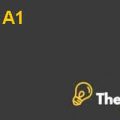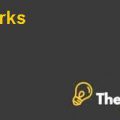
Q#01: What are the basic types of auctions?
Answer:
Auctions mainly involve the inclusion of two parties in which one party has some relevant information related to the transaction and the other party does not know. Moreover, there are several types of auctions that are used in the acquisition of goods or services either online or it’s may be on the traditional one-on-one basis. But nowadays auctions have mainly become an innovative type of mechanism used for exchange. There has been an extensive use of the internet due to the ease that it has provided to the suppliers by the advanced technology. As a result, there are thousands of auctions that are taking place online.
Some of the basic types of auctions are listed below;
- First-price sealed-bid auctions
- Second-price sealed-bid auctions
- Descending-bid auctions
- Ascending-bid auctions
These are discussed briefly below;
At first-price sealed-bid auctions, bidders normally place a higher bid and it is being presented in an envelope and after that immediately it is handed over to the auctioneer. Later on, these envelopes are opened and that individual who has made the highest bid will win the auction and pays the amount of the bid.
The second-price sealed-bid auction is also almost like the first-price, but it is having a few different features. In this type of auction the bidder places a bid in the envelope and given to the auctioneer right after that. But the difference arises in such a way that the price that has to be paid will have to be equal to the second highest bid.
Thirdly, in descending bid auctions the auctioneer has the authority to fix the price and it will be at a certain level, which is quite high to deter the rest of the bidders. After that the price is decreased until the time that the bidder is prepared to make an acquisition at the current price.
Lastly, in Ascending bid auctions the parties to the transaction usually make the highest bids and also the bid is stopped when the parties to the transaction are not prepared to make the payment that is higher than the current bid. This process is continued until no one is making his mind to make a higher bid. Hence, the one who has made a highest bid will win the auction and at the final amount of bid. But in certain situation the lot is only sold at the time when the reserve is being reached by the bidding and that price will be set by the seller.
Q#02: What features of the proposed Mars’ auction present implementation challenges?
Answer:
There are several features of the proposed auction of Mars’ which may present several challenges that will have to be faced at the time of implementation, respectively. It is among the several types of auctions in which the roles that are being played normally are reversed between the seller and buyer. It can be seen that in an ordinary auction or a forward auction there is a competition among the buyers in order to get the goods and services at higher prices simply by making the highest bid. On the other hand, in reverse auction there is an intense competition between different suppliers of goods and services in order to get the business from the buyer. Hence, the prices that will be charged in this process are the lowest in order to undercut each other. However, there are also some challenges that have to be taken care of in order to avoid any sort of problem.
The first and the most important challenge that Mars, Inc. will have to deal with is to find the cost minimizing set of bids that will meet the business requirements of Mars, respectively. It will ultimately result in increased costs because other non-price factors are not taken into account. There are several priorities like the quality of the product, the reliability related to the delivery, timing and flexibility are traded off for lower unit price charged by the supplier.
Other than this, the RFQs are able to take into account the requirements for the non-price factors. Hence, if the supplier wants to win a bid, then the supplier will have to decrease his margin to a minimum threshold. Despite this, the other main challenge that will have to be faced is the impression among suppliers about the customers that they may be acting opportunistically and as a result may be taking advantage of the suppliers......................
This is just a sample partial case solution. Please place the order on the website to order your own originally done case solution.











